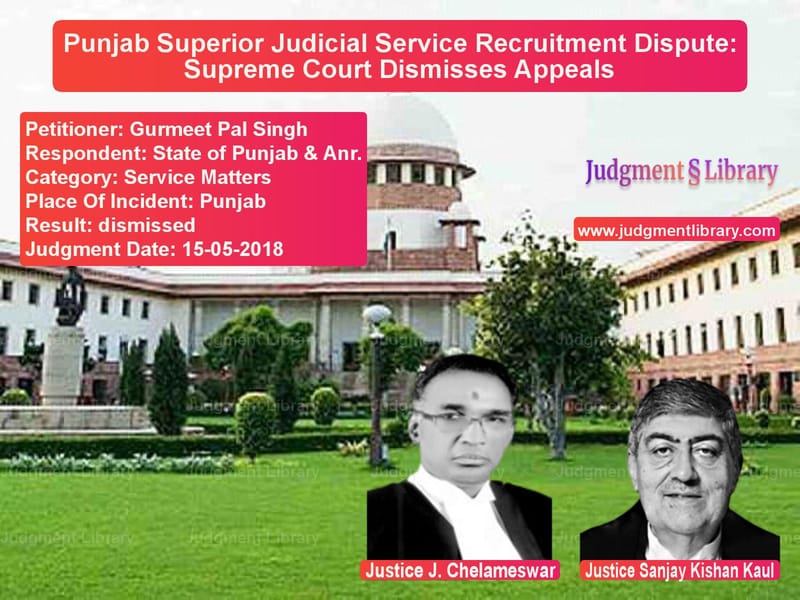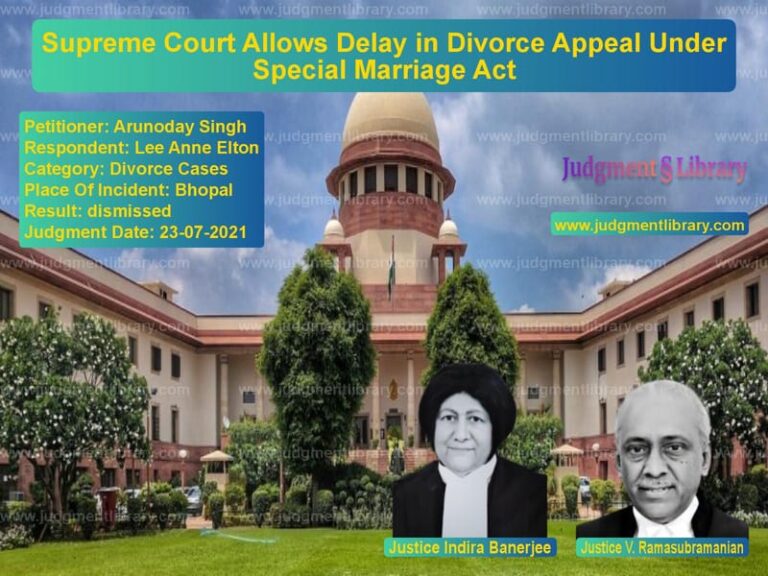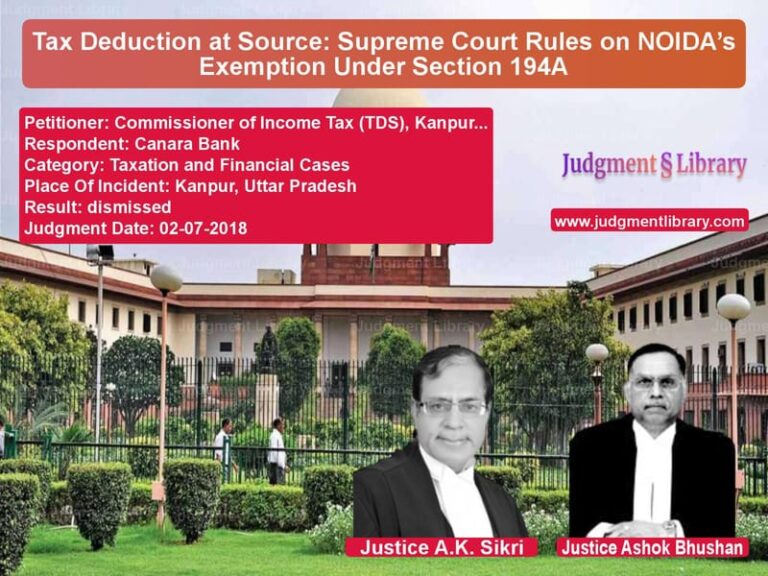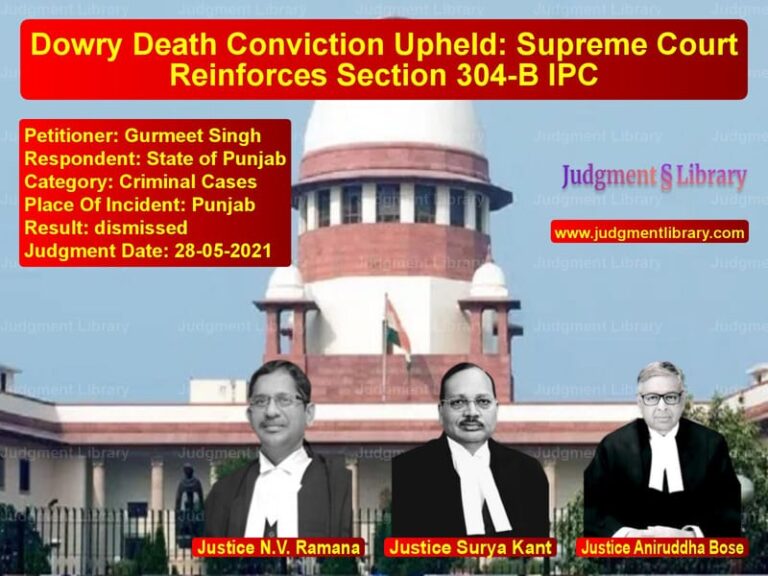Punjab Superior Judicial Service Recruitment Dispute: Supreme Court Dismisses Appeals
The case of Gurmeet Pal Singh v. State of Punjab & Anr. revolves around a dispute over the recruitment process for the Punjab Superior Judicial Service (PSJS). The Supreme Court dismissed the appeals challenging the validity of the 2008 recruitment process and refused to grant relief to the petitioners.
Background of the Case
The Punjab Superior Judicial Service Rules, 2007 (PSJS Rules) were notified on August 31, 2007, regulating recruitment and service conditions. Under Rule 7(3)(c), 25% of the posts were reserved for direct recruitment from the Bar through a written test and viva-voce.
On February 2, 2008, an advertisement was issued to fill 21 posts under this quota, categorized as follows:
- 10 posts – General category
- 6 posts – Scheduled Caste (SC)
- 2 posts – Backward Class (BC)
- 1 post – Ex-Serviceman (General)
- 1 post – BC (Ex-Serviceman)
- 1 post – Physically Challenged (Locomotor or Orthopedic Disability)
However, certain issues arose post-recruitment, leading to multiple writ petitions.
Key Issues Raised by the Petitioners
The petitioners, who appeared for the examination but were not selected, raised several objections:
- Additional Vacancy from Elevation of a Judge: Justice Sabina was elevated to the Punjab and Haryana High Court during the recruitment process, creating an extra vacancy. The petitioners argued that this should have been added to the advertised posts.
- Wrongful Reservation for Ex-Servicemen: The advertisement reserved two posts for Ex-Servicemen, but under the Punjab Ex-Servicemen Rules, this category was exempted from PSJS. The petitioners claimed these seats should have been allocated to General candidates.
- Absorption of Fast Track Court Judges: Two candidates from Fast Track Courts were absorbed into PSJS, which the petitioners argued was unfair, as these positions should have been filled through direct recruitment.
- Unfilled Physically Challenged Category Seat: No eligible candidates applied under this category, and the seat was carried forward instead of being allocated to the General category as per the advertisement.
- Incorrect Cadre Strength Calculation: The advertisement was based on a cadre strength of 107 posts, but the actual strength at the time was 111. The petitioners contended that more posts should have been filled.
Arguments by the Respondents
The State of Punjab and the Punjab and Haryana High Court defended the recruitment process, stating that:
- The advertisement clearly mentioned that the number of posts was subject to variation, but this did not mandate an increase.
- The Ex-Servicemen reservation was acknowledged as an error, but instead of reallocating the seats, one was used for absorbing Fast Track Court Judges.
- The absorption of Fast Track Court Judges was in line with Brij Mohan Lal v. Union of India, which allowed regularization based on merit.
- The Physically Challenged seat was rightfully carried forward as per the Persons with Disabilities Act, 1995.
- The calculation of cadre strength at 107 posts was correct at the time of advertisement.
Supreme Court’s Observations
The Court analyzed each contention and held that:
“The petitioners never challenged the advertisement before the results were declared. Raising objections after being unsuccessful is not permissible.”
The Court further ruled:
- Additional vacancy: There was no requirement to increase posts due to a judge’s elevation.
- Ex-Servicemen seats: While an error occurred, the seat was allocated as per judicial recommendations.
- Fast Track Court absorption: These appointments followed Supreme Court guidelines and were separate from direct recruitment.
- Physically Challenged seat: Carrying forward the vacancy was legal and aligned with disability laws.
- Cadre strength: The petitioners’ arguments were based on a future correction of cadre strength and did not affect the 2008 recruitment.
Final Judgment
The Supreme Court dismissed the appeals, holding:
“A candidate who participates in an examination without raising objections cannot later challenge its validity upon being unsuccessful.”
The Court also noted that several petitioners had reappeared in subsequent recruitment exams but failed, further weakening their claims.
Conclusion
This ruling reaffirms that recruitment processes should be challenged at the advertisement stage and not after results are declared. It also upholds the validity of judicial discretion in managing unforeseen vacancies.
Petitioner Name: Gurmeet Pal Singh.Respondent Name: State of Punjab & Anr..Judgment By: Justice J. Chelameswar, Justice Sanjay Kishan Kaul.Place Of Incident: Punjab.Judgment Date: 15-05-2018.
Don’t miss out on the full details! Download the complete judgment in PDF format below and gain valuable insights instantly!
Download Judgment: Gurmeet Pal Singh vs State of Punjab & An Supreme Court of India Judgment Dated 15-05-2018.pdf
Direct Downlaod Judgment: Direct downlaod this Judgment
See all petitions in Recruitment Policies
See all petitions in Public Sector Employees
See all petitions in Judgment by J. Chelameswar
See all petitions in Judgment by Sanjay Kishan Kaul
See all petitions in dismissed
See all petitions in supreme court of India judgments May 2018
See all petitions in 2018 judgments
See all posts in Service Matters Category
See all allowed petitions in Service Matters Category
See all Dismissed petitions in Service Matters Category
See all partially allowed petitions in Service Matters Category







